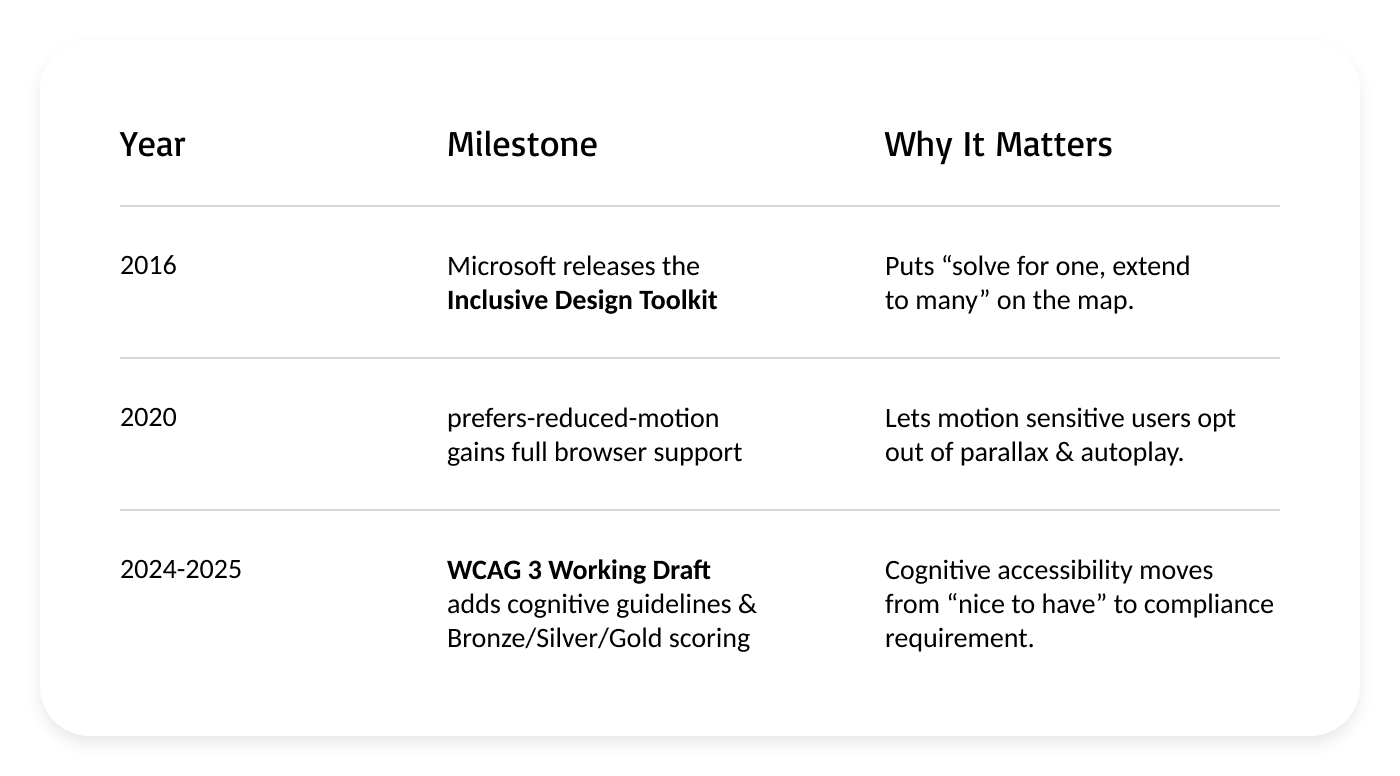Designing Beyond the Median Mind
How neurodivergent people's daily battle reveals the UX gaps we should've closed long ago.
The crisis starts on Alexanderplatz.
My nine-year-old son and I are walking through the crowd on Berlin’s noisiest square. The loud sounds of ongoing construction, sickening smells, and sudden floods of tourists jumping out of nowhere keep both of us tense and on high alert. Every time we’re here, the brutal sensory overload drains our neurodivergent minds within seconds.

Eventually, we escape into a giant sports store.
I exhale.
Yet my son stops, rooted to the spot, hands clamped over his eyes. I turn around and see why. Four floor-to-ceiling LED banners around us are flickering in rapid fire.
I’m a product designer, I thought, And quite often I insist adding motion just like this for another amusement and the attention-grabbing effect. Never imagining it could ambush someone I love.
The Bigger Problem
For neurodivergent people, everyday digital interactions with B2C products can quickly transform from simple tasks into overwhelming endurance tests. Excessive motion, bright visuals, unpredictable navigation patterns, and infinite scrolling can result in sensory overload, distress, and anxiety, and ultimately lead to avoidance.
Quick example. When I see a CAPTCHA that asks me to do a math problem, I feel extremely stupid. That’s because I have some form of dyscalculia. And I can only imagine what people with detail-processing differences think about the “Identify all the traffic lights” task.
Neurodivergent is tightly connected to autism spectrum disorder (ASD). And the rapid rise in autism prevalence, with co-occurring conditions, such as ADHD, dyslexia, dyspraxia, and sensory processing differences, makes cognitive accessibility more critical than ever.
When we talk about ASD, we typically picture someone who is withdrawn, socially distant, yet exceptionally gifted in a particular skill, such as art or mathematics (also known as savant syndrome). But in reality, only a minority of autistic people display this profile. Most fall along a broad continuum of abilities and support needs. In fact, autism includes a diverse range of presentations and challenges.
In the U.S., approximately 3.2% of eight-year-olds (about 1 in 31) are now diagnosed with autism. Research in Europe shows a similar picture: approximately 1% of Europeans (about 1 in 100 people) are autistic. The European Autism Spectrum Disorder in the European Union (ASDEU) project screened children aged 7 to 9 in 14 countries and found an average prevalence of 12.2 autistic children per 1,000 (about 1.2%). And the World Health Organization reports that about one in 100 children has autism.
What work have we already done to address this problem, and where are we today?
Key milestones that pushed neuro-inclusive design from “nice-to-have” to emerging compliance standard (2016–2025)
2016: Microsoft’s Inclusive Design Toolkit: “Solve for One, Extend to Many”
Microsoft introduced a toolkit that shifted the industry’s thinking from designing solely for an imagined “average” user to recognizing and embracing human diversity. The toolkit promoted addressing unique needs first to make products more accessible and useful for a broader audience, including those with cognitive and neurological differences.
2020: CSS prefers-reduced-motion gained full browser support.
In 2020, all major browsers adopted support for the CSS prefers-reduced-motion media query. This was a significant technical leap forward in neuro-inclusive design. It allows motion-sensitive users, including those with autism, ADHD, vestibular disorders, or anxiety, to opt out of intrusive or distracting animations, transitions, and autoplay content. This creates calmer and less stressful digital experiences.
2024–2025: WCAG 3.0 draft introduces cognitive guidelines and a new scoring system.
The World Wide Web Consortium’s (W3C) working draft of the Web Content Accessibility Guidelines (WCAG) 3.0 explicitly introduced cognitive accessibility. The draft includes comprehensive guidelines for reducing cognitive load, sensory overstimulation, and navigational confusion.
Despite growing awareness of cognitive accessibility, it has been largely overlooked in many usability standards. The Web Content Accessibility Guidelines (WCAG) 2.0, which are widely used in digital accessibility audits, have historically focused on visual, motor, and auditory impairments, with little meaningful coverage of cognitive load. Consequently, most design teams continue to optimize their products primarily for customer satisfaction metrics such as Net Promoter Score (NPS), overlooking the mental effort and stress that users may experience.
This means that when we design for the average user, we overlook countless real individuals, including the people we love.
How to build neuro-inclusion into your design workflow
Keep reading with a 7-day free trial
Subscribe to Eidos Design to keep reading this post and get 7 days of free access to the full post archives.




